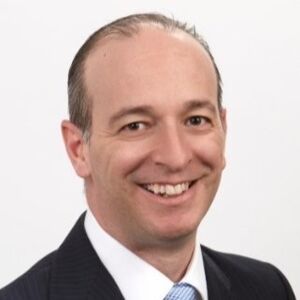"I am passionate about supporting medical research": Q&A with Regal Funds Management's Philip King

Industry Moves speaks to Philip King, CIO of Regal Funds Management, and a core fund manager of the new Hearts and Minds listed investment company, about the high conviction LIC, which aims to provide support to medical research. He explains why medical research funding is not only critical for finding cures and medicines that prevent and treat diseases, but it can also reap a significant return on investment in health benefits.

Industry Moves speaks to Philip King, CIO of Regal Funds Management, and a core fund manager of the new Hearts and Minds listed investment company, about the high conviction LIC, which aims to provide support to medical research. He explains why medical research funding is not only critical for finding cures and medicines that prevent and treat diseases, but it can also reap a significant return on investment in health benefits.
Who came up with the idea for the Sohn Hearts and Minds conference and the fund?
The idea for a conference, where top fund managers gather and share their investment ideas, originated in the US, but Gary Weiss brought it to Australia. Since it was introduced two years ago, the Sohn Hearts and Minds Conference has donated more than $8 million to beneficiaries, including the Victor Chang Cardiac Research Institute and the Black Dog Institute.
The concept of creating a listed investment company (LIC) based on the conference came from Matthew Grounds, Guy Fowler and Gary Weiss, and they have since involved a number of high profile Australian fund managers and investors. The Hearts and Minds Investment LIC (ASX: HM1) is an opportunity for investors to access a concentrated portfolio of high conviction stock picks but also give back to charities involved in medical research.
Was it easy to get on board the LIC?
From my perspective, it was easy to be involved in Hearts and Minds given it is a great cause. I am passionate about supporting medical research. Regal's designated charity for the LIC is the research department at the Royal Prince Albert Hospital. One of my close friends is an emergency specialist there and unfortunately they don't always attract the research funding that other health areas attract. I also know firsthand the value of the public health sector as my wife is a midwife at Sydney's North Shore Hospital - so getting on board Hearts and Minds was an easy decision.
"For every dollar invested in medical research, an average of $2.17 in health benefits is returned."
Why do the proceeds go to medical research (as opposed to another worthy cause)?
Australia is a global leader in medical research and our scientists are responsible for some of the world's most important medical discoveries. Medical research funding is critical, as it helps develop new medicines, treatments, drugs, vaccines and procedures that prevent and treat diseases. Furthermore, investment in this field encourages young people to pursue careers that help tackle the medical problems of today and tomorrow.
Investment in medical research has also provided instances of strong returns historically. Investment in Australian medical research between 1993 and 2005 is estimated to have returned a net benefit of $29.5 billion to Australia. For every dollar invested in medical research, an average of $2.17 in health benefits is returned.
Were the fund managers given a brief for companies to select?
The conference fund managers - those presenting at this year's Sohn Hearts and Minds Conference - were briefed to present their top long-only pick. This will form 40% of the LIC's portfolio.
The remaining 60% of the portfolio will come from five 'core' fund managers like Regal, who were each briefed to give three recommendations on their highest conviction picks. In addition to Regal, the core fund managers are Cooper, Magellan, Caledonia and Paradice. On a quarterly basis, each of the core fund managers will make their top three long-only stock recommendations and present them to the LIC's investment committee.
Will the conference continue to be an annual event? What will that mean for stock turnover in the fund (i.e. if ideas from the conference are used every year)?
The conference will continue being an annual event and will continue to donate to charities. What this means for the stock turnover is that each year, 40% of the LIC's portfolio - that is, the stock picks from fund managers presenting at the conference - will be rotated out and replaced by the stock recommendations from the new fund managers at the conference. It's expected that these stocks will be held for a period of 12 months.
"I bought my first shares when I was thirteen years old"
What will you do if the offer is oversubscribed?
If this is the case, the demand for it will be scaled back. This LIC is hard capped at $500 million.
Would you consider a wholesale/Institutional version of the fund?
There are no current plans to do this.
What excites you about funds management?
I have always been fascinated by the share market. Natural curiosity and a contrarian instinct, combined with a competitive nature, made it a good fit. I bought my first shares when I was thirteen years old and I am proud to say that some of my friends from school are still investors with Regal today.
I thoroughly enjoy the role we play in helping investors grow their wealth. Importantly, our long/short approach to investing provides investors with attractive returns across varying market conditions. We believe that our ability to take short positions is an important source of performance and it gives us a significant advantage versus long-only competitors.
If you could change one thing about the industry what would it be?
That Australian investors be more sophisticated and diversified in their approach to wealth management. Most Australians have too much exposure to long only equities and property, partly because of huge bull markets over recent decades. Alternative investments provide investors with a number of clear benefits, including low correlation and stronger long-term performance, versus the traditional asset classes. Now is a good time for investors to seek more diversification in their investment portfolios.



